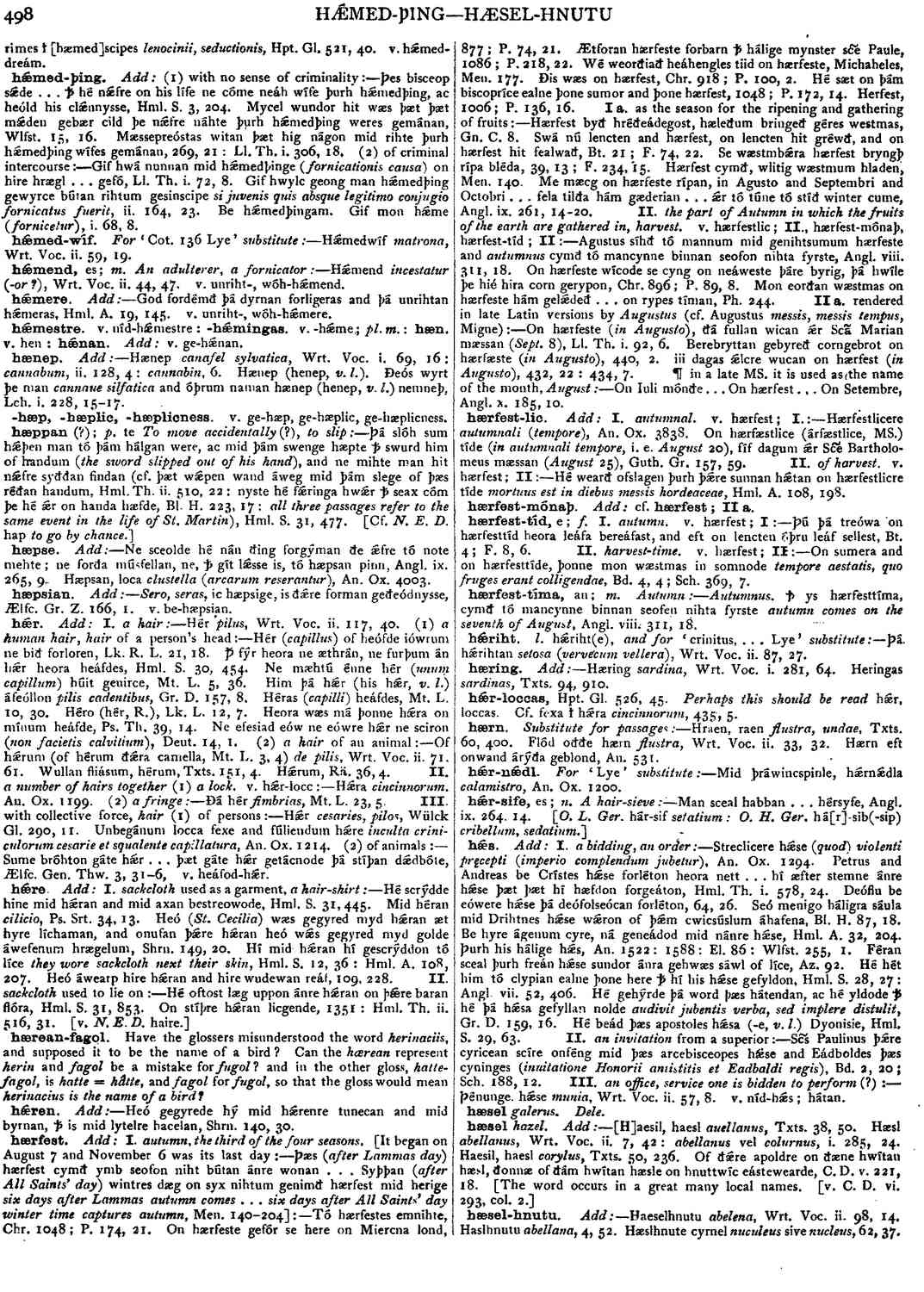hǽs
-
Streclicere hǽse
(quod) violenti pręcepti (imperio complendum jubelur),
- An. Ox. 1294.
-
Petrus and Andreas be Crístes hǽse forléton heora nett . . . hí æfter stemne ánre hǽse þæt þæt hí hæfilon forgeáton,
- Hml. Th. i. 578, 24.
-
Deóflu be eówere hǽse þá deófolseócan forléton,
- 64, 26.
-
Seó menigo háligra sáula mid Drilitnes hǽse wǽron of þǽm cwicsúslum áhafena,
- Bl. H. 87, 18.
-
Be hyre ágenum cyre, ná geneádod mid nánre hǽse,
- Hml. A. 32, 204.
-
Þurh his hálige hǽs,
- An. 1522: 1588: El. 86: Wlfst. 255,
-
Féran sceal þurh freán hǽse sundor ánra gehwæs sáwl of líce
- , Az. 92.
-
Hé hét him tó clypian ealne þone here ꝥ hí his hǽse gefyldon,
- Hml. S. 28, 27: Angl vii. 52, 406.
-
Hé gehýrde þá word þæs hátendan, ac hé yldode ꝥ hé þá hǽsa gefyllan nolde
audivit jubentis verba, sed implere distulit,
- Gr. D. 159, 16.
-
Hé bead þæs apostoles hǽsa (-e,
v. l.
)- Dyonisie, Hml. S. 29, 63.
-
Sc̃s Paulinus þǽre cyricean scíre onféng mid þæs arcebisceopes hǽse and Eádboldes þæs cyninges
(innitatione Honorii amistitis et Eadbaldi regis).
- Bd. 2, 20 ; Sch. 188, 12.
-
Þénunge. hǽse
munia,
- Wrt. Voc. ii. 57, 8.
Bosworth, Joseph. “hǽs.” In An Anglo-Saxon Dictionary Online, edited by Thomas Northcote Toller, Christ Sean, and Ondřej Tichy. Prague: Faculty of Arts, Charles University, 2014. https://bosworthtoller.com/51560.
Checked: 0